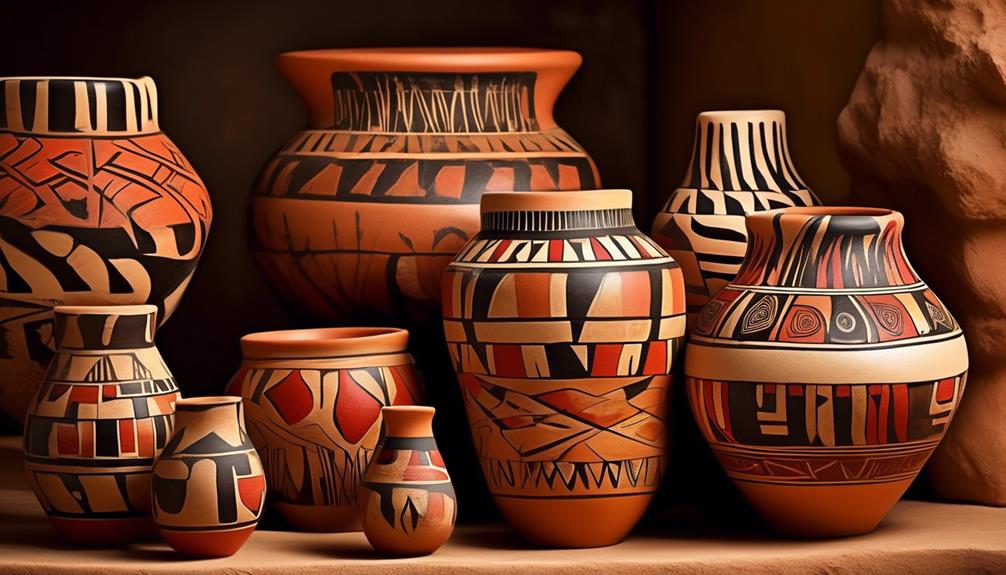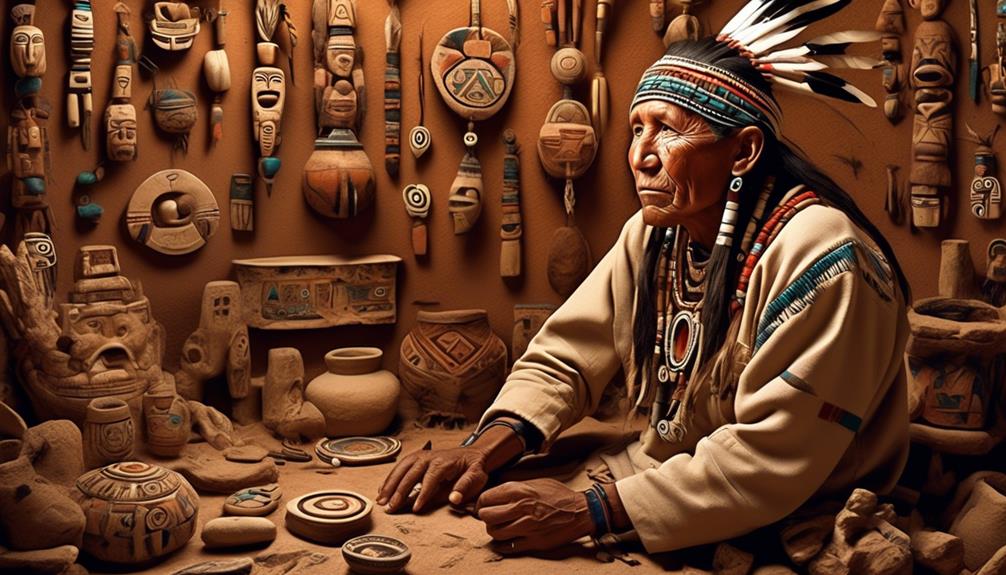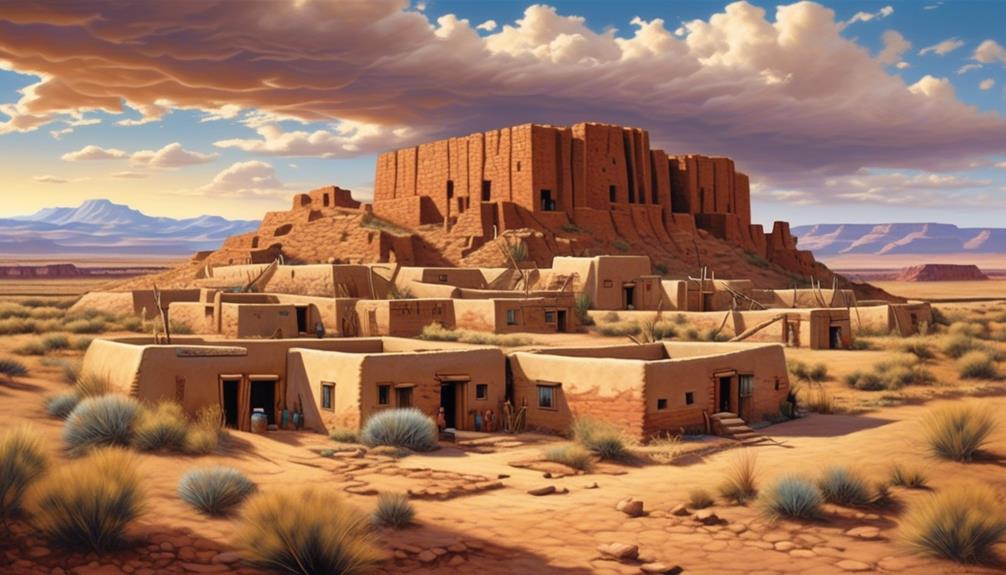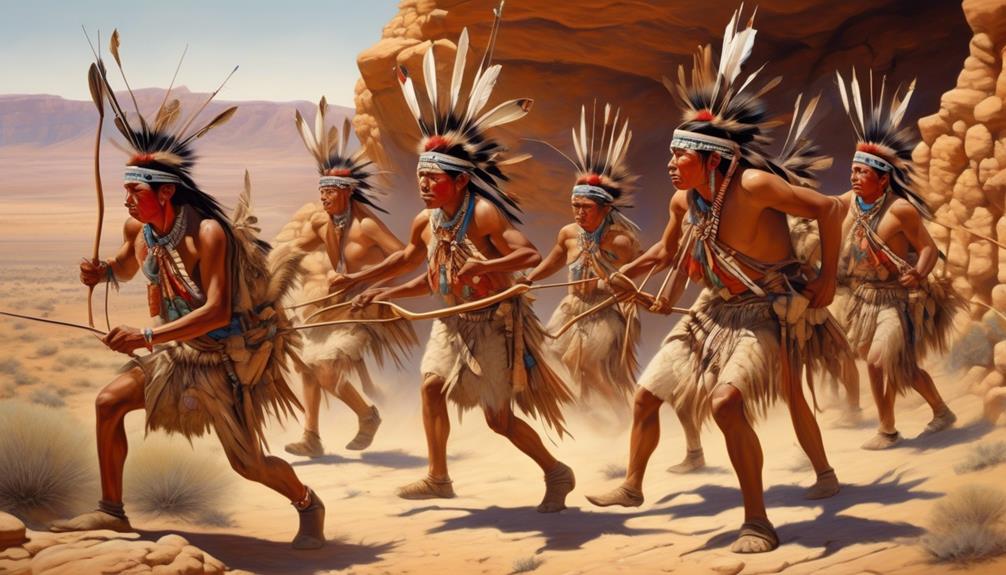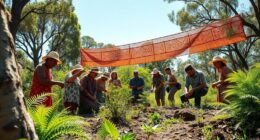Curious about the rich and ancient traditions of the Hopi Native American tribe?
It's often said that the Hopi tribe has some of the most well-preserved traditions and ceremonies among Native American cultures.
But what exactly are these traditions, and how do they shape the unique identity of the Hopi people?
Let's explore the fascinating customs and practices that have been passed down through generations, offering a glimpse into the enduring legacy of the Hopi tribe.
Key Takeaways
- Hopi ceremonial practices are deeply intertwined with nature and spiritual beliefs.
- Hopi art is rich in symbolism, representing nature, spirituality, and cultural beliefs.
- Hopi people have a deep connection to agriculture and sustainable farming practices.
- Hopi oral traditions shape the cultural identity of the tribe and offer guidance for ethical behavior and understanding of cultural practices.
Hopi Ceremonial Practices
Hopi ceremonial practices encompass a rich tapestry of rituals and ceremonies deeply intertwined with the natural world and the spiritual beliefs of the Hopi people. These ceremonial rituals aren't only a means of connecting with the divine but also serve as a way to maintain the balance and harmony of the universe.
Spiritual practices such as the Bean Dance, the Niman Kachina ceremony, and the Snake Dance are integral parts of the Hopi tradition. The Bean Dance, for example, is a significant ritual that marks the beginning of a new year and is performed to ensure a bountiful harvest.
The Niman Kachina ceremony, on the other hand, is a farewell ritual for the Kachina spirits who've visited the Hopi people during the growing season.
Lastly, the Snake Dance is a deeply spiritual practice aimed at seeking blessings for rain and fertility. These ceremonial rituals are conducted with utmost reverence and are a testament to the Hopi people's deep spiritual connection with the natural world.
Hopi Art and Symbolism
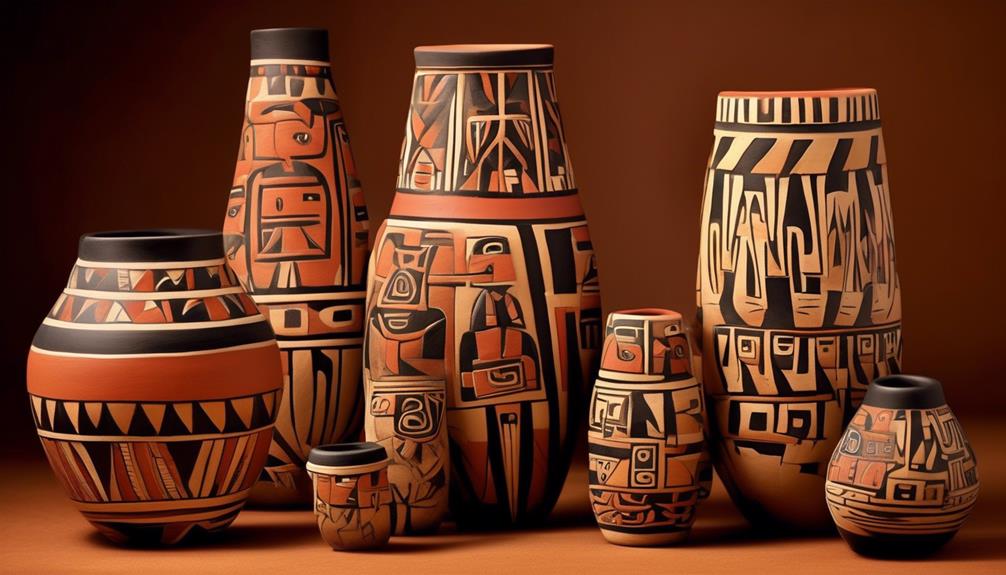
Frequently, traditional Hopi art and symbolism are imbued with profound cultural significance and spiritual meaning, reflecting a deep connection to the natural and spiritual world. The art of the Hopi people is a rich tapestry of symbolism, with each piece telling a story and carrying deep spiritual significance.
Symbolism in Art: Hopi art is deeply symbolic, often representing elements of nature, spirituality, and the tribe's cultural beliefs.
Hopi Pottery: Traditional Hopi pottery is adorned with intricate designs that hold symbolic meanings. For instance, the migration pattern of the Hopi people is often depicted in the pottery's designs, symbolizing their ancestral journey.
Kachina Dolls: These sacred dolls are crafted with precision and care, each design and color holding specific spiritual significance within the Hopi culture. They represent various deities and ancestral spirits, and their vibrant colors convey different messages and blessings.
Color Meanings: In Hopi art, colors hold great importance. For example, the color yellow often symbolizes purity and growth, while blue represents the spirit world and water.
The art and symbolism of the Hopi people are windows into their profound spirituality and rich cultural heritage.
Hopi Agricultural Traditions
Nurturing the land through time-honored practices and spiritual reverence, the Hopi people have cultivated a deep connection to agriculture that's integral to their cultural identity. The agricultural techniques of the Hopi are steeped in tradition and sustainability. They've developed ingenious methods for dry farming in the arid desert landscape, such as using terraced fields and planting their crops in small, sunken plots to capture and retain scarce water. The Hopi people also practice crop rotation and intercropping, which not only maximizes the efficiency of their farming but also maintains the health of the soil.
Harvest celebrations are a significant part of Hopi agricultural traditions. These celebrations are marked by intricate rituals, dances, and ceremonies that express gratitude to the land and the spirits for the bountiful harvest. The ceremonies aren't only a time of celebration but also serve as a way to pass down agricultural knowledge and traditions to future generations. The entire community comes together to share in the joy of the harvest, reinforcing the communal bond that's central to the Hopi way of life.
Hopi Oral Traditions
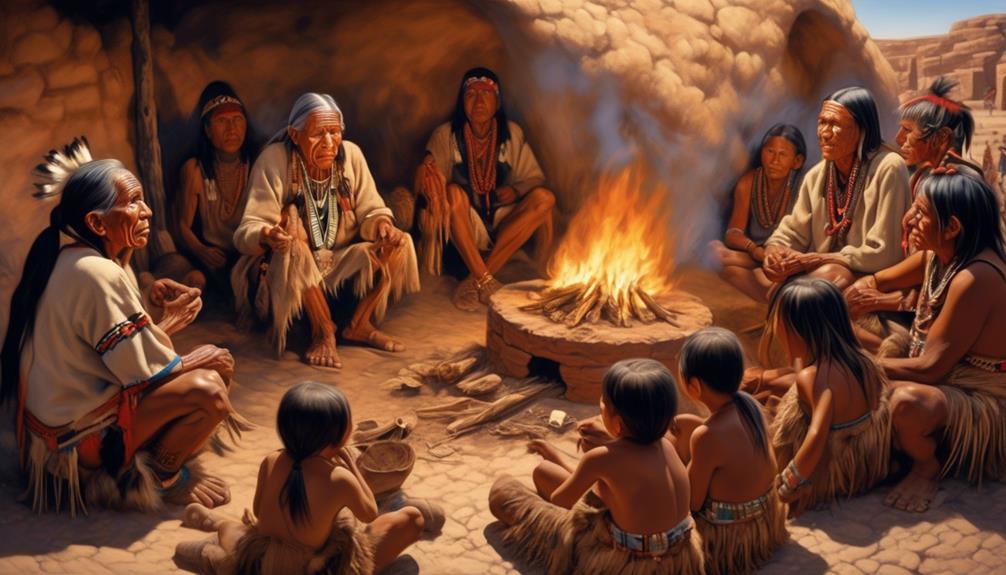
Cultivating a rich tapestry of cultural heritage, the Hopi people have bestowed upon us a treasure trove of oral traditions, weaving together stories, legends, and wisdom passed down through generations. Hopi storytelling is a vibrant tapestry, intricately woven with mythology and history, offering profound insights into their worldview and values. The oral traditions of the Hopi people serve as a living repository of their cultural identity, reflecting the interconnectedness of their community and the natural world around them.
These oral traditions play a vital role in the preservation and adaptation of Hopi cultural heritage, ensuring that their values and beliefs endure through time. The stories and myths shared through generations serve as a guide for ethical behavior, as well as a means of understanding the origins of their people and the significance of their rituals and ceremonies. Through these oral traditions, the Hopi people continue to adapt and evolve, finding ways to uphold their ancestral wisdom while embracing the changing world around them.
- Cultural Identity: Hopi oral traditions are deeply intertwined with the cultural identity of the tribe, shaping their collective consciousness.
- Interconnectedness: These oral traditions emphasize the interconnectedness between the Hopi people and the natural world.
- Guidance and Understanding: The stories and myths offer guidance for ethical behavior and provide a deeper understanding of their cultural practices.
- Adaptation and Evolution: Hopi oral traditions continue to evolve, allowing the tribe to adapt while preserving their ancestral wisdom.
Hopi Clan and Kinship System
Deeply rooted in the fabric of Hopi society, the clan and kinship system plays a pivotal role in shaping the social structure and relationships within the community. The Hopi people are organized into matrilineal clans, each of which is associated with a specific moiety or half of the tribe. This clan structure forms the foundation of Hopi social organization, influencing marriage customs, societal roles, and ceremonial practices. Kinship ties are central to the Hopi way of life, guiding interpersonal relationships, responsibilities, and interactions within the community.
| Moiety | Clans |
|---|---|
| Hopi | Bear, Sun, Kachina, Sand, Snake |
| Tewa | Flute, Parrot, Roadrunner, Spider, Water |
The clan system dictates marriage patterns, with Hopi tradition emphasizing endogamy, the practice of marrying within one's own clan. This reinforces kinship ties and ensures the preservation of cultural customs and traditions. Each clan is responsible for safeguarding specific ceremonies and knowledge, contributing to the preservation of Hopi heritage. Furthermore, the clan and kinship system fosters a strong sense of community and collective responsibility, reinforcing the interconnectedness of the Hopi people. This intricate network of kinship ties and clan affiliations continues to be a cornerstone of Hopi society, perpetuating the tribe's rich cultural identity and traditions.
Frequently Asked Questions
What Role Do Specific Animals Play in Hopi Ceremonial Practices?
Specific animals play a vital role in Hopi ceremonial practices. Animal symbolism holds deep ceremonial significance, representing spiritual connections and teachings.
The Hopi honor the coyote, bear, and eagle, among others, as sacred beings that embody important values and lessons. These animals are incorporated into various ceremonies and rituals, serving as symbols of wisdom, strength, and guidance for the community.
The spiritual significance of these animals is integral to Hopi cultural traditions.
How Do Hopi Artists Incorporate Traditional Symbols Into Their Work?
Incorporating symbolism into their art, Hopi artists utilize traditional techniques to infuse their work with cultural significance. Through intricate designs and vibrant colors, they convey stories, beliefs, and values passed down through generations.
The use of specific symbols, like katsinas or geometric patterns, reflects the tribe's spiritual connection to the natural world and their reverence for ancestral wisdom.
This artistic tradition serves as a powerful means of preserving and sharing Hopi heritage.
What Are the Specific Techniques Used in Hopi Agriculture?
We use traditional farming methods and Hopi cultivation practices to sustain our community.
Hopi farming techniques are deeply rooted in our culture and involve unique agricultural practices. Our ancestors taught us to care for the land and use sustainable methods, such as dry farming and terraced fields.
These traditional techniques have been passed down for generations, reflecting our respect for the earth and the wisdom of our ancestors.
Can You Provide a Specific Example of a Traditional Hopi Oral Story?
Sure,
I'd love to share a specific example of a traditional Hopi oral story.
Hopi storytelling is a deeply ingrained part of our oral tradition, passing down tribal legends and cultural significance through generations.
One compelling example is the story of the emergence, which recounts the journey of the Hopi people into the world.
This story holds great importance in our culture, emphasizing our connection to the land and our ancestors.
How Do Hopi Clans Determine Leadership Roles Within the Tribe?
In the Hopi tribe, leadership roles are determined through a combination of traditional clan traditions and the guidance of respected elders. The selection process involves a focus on qualities like wisdom, integrity, and a deep understanding of the tribe's customs.
Each clan plays a crucial role in the decision-making process, ensuring that the leaders chosen are committed to upholding the values and traditions of our people.
Conclusion
In learning about the traditions of the Hopi Native American tribe, we were struck by the deep connection between their ceremonial practices, art, agriculture, oral traditions, and kinship system.
It's fascinating how these aspects of their culture intertwine and reinforce one another, creating a rich and holistic way of life.
The Hopi's reverence for their ancestors and the land is evident in every tradition, showcasing a profound respect for their heritage and the natural world.

